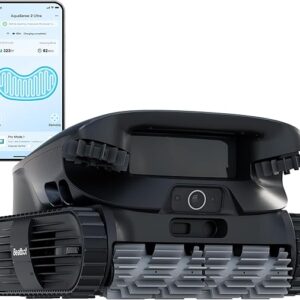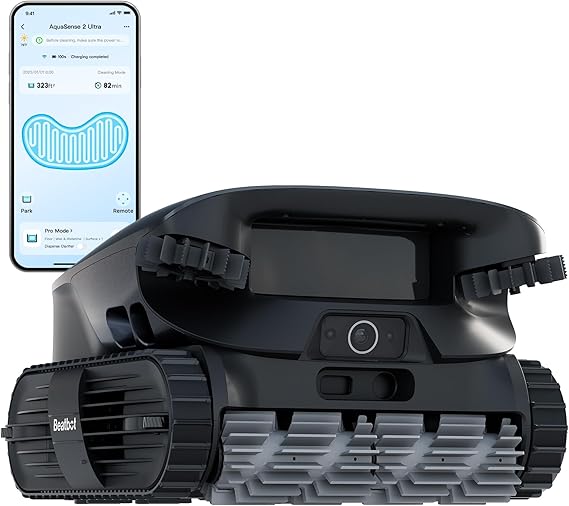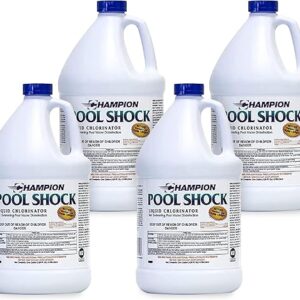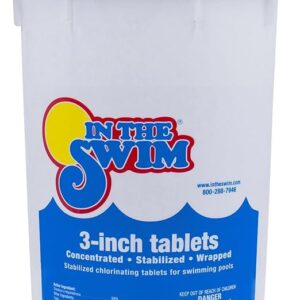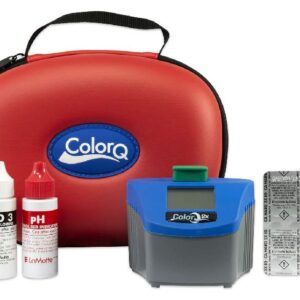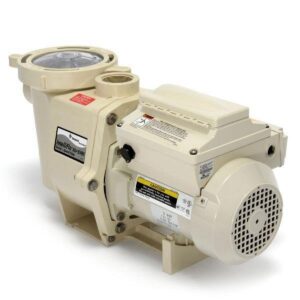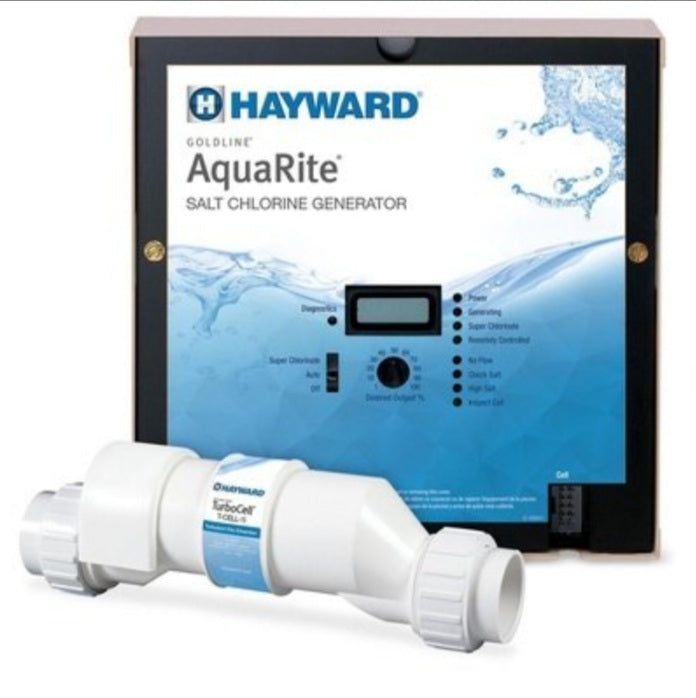How to Shock a Swimming Pool and The Best Pool Shock to Use
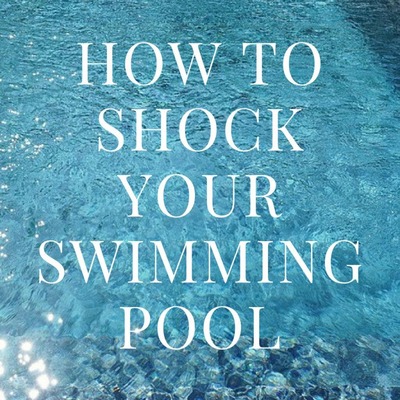
What is Shocking a Swimming Pool or Spa?
Shocking, sanitizing, or chlorinating a swimming pool or spa is adding chlorine to a pool or spa water to raise and maintain free chlorine (FC) at the recommended level of 2-3 ppm for non-saltwater pools, 3-4 ppm for saltwater pools, and 3-6 ppm for a hot tub.
Shocking a swimming pool can also mean SLAM (Shock Level and Maintain), which is adding chlorine in your pool and maintaining very high FC levels between 12ppm to 24ppm for a non-salt water pool and 28ppm to 31ppm for a saltwater pool depending on the Cyanuric acid level, to kill algae or ammonia that come as a result of poor sanitization of pool and spa.
Adding chlorine to your pool or spa daily or weekly, depending on the type of chlorine shock you use, is vital. This is because chlorine sanitizes water by eliminating harmful germs and bacteria, which cause murky water, algae, and ammonia in swimming pools.
Chlorine also eliminates chloramine or combined chlorine (CC), which is formed as FC level (FCL) in your water depletes due to pool usage or as a result of UV light from the Sun.
Combined chlorine makes pool water cloudy, smells more of chlorine, and cannot sanitize your pool or spa water to prevent harmful bacteria and germs.
If you don’t have a saltwater chlorine generator, you need to add chlorine manually to your water at least once a day or a week, depending on which chlorine shock you are using to maintain the recommended FCL in your pool or spa.
You don’t need to manually add conventional chlorine to a saltwater pool because the Saltwater Chlorine Generator (SWCG) does it for you. However, if you have cloudy water in your saltwater pool, learn how to maintain a saltwater pool before opting to shut down your chlorine generator to shock your pool manually using chlorine.
Also, if you are running a spa and wondering how to sanitize it, we prefer using chlorine. This is because when using non-chlorine oxidizers like bromine, you still need to use chlorine for your spa to work effectively.
You can later check out a spa or hot tub maintenance guide to learn more about how to maintain your spa at a very minimal cost, the best sanitizer to use in your hot tub, and more on spa maintenance; for now, let’s do the shocking.
Before we go into how to shock a pool or spa to clear cloudy water, let’s discuss a few details you need to know before shocking the pool, like when to shock, time to shock, and the best chlorine shock to use.
After How Long Do I Shock My Swimming Pool and Spa?
A good and recommended practice is to test your FC level every evening and raise it back to recommended levels if lower. Remember that the hot water in a spa will make hot tub chemicals work and deplete faster than a pool without a water heater.
The duration to shock your pool or spa will largely depend on the type of chlorine you use to shock your pool, including granular, liquid, trichlor, or dichlor.
If you use liquid chlorine(sodium hypochlorite), you will shock your pool or spa at least once a day if the pool or spa is busy.
You will shock your pool weekly using granular chlorine(calcium hypochlorite), trichlor, and dichlor.
How Do I Know the Free Chlorine Level is Low in My Pool?
Chemically balanced pool and spa water is the beginning of easy swimming pool maintenance. As such, you need a very accurate and reliable pool chemical test kit like LaMotte ColorQ Pro 7 that tests all chemicals in your water, including FC, TC, pH, Total Alkalinity(TA), Cyanuric acid, Calcium Hardness, and Bromine for bromine maintained pools and spa.
The other way to know your FCL is low is when your water is cloudy and has a strong chlorine smell. However, it would be best not to wait until your water is cloudy to shock your pool because you might have bacteria causing algae and ammonia.
What Is The Right Time to Shock a Swimming Pool?
The best time to shock your swimming pool is during the evening when the sun is gone. This is because ultraviolet (UV) light from the Sun consumes chlorine faster, and if you do it during daylight, your FC will reduce very fast and leave your pool vulnerable to harmful germs and bacteria.
Types of Chlorine Shocks and The Best to Use in Your Pool
This is very important. Several chlorine shocks are available on the market, and you need to know what type of chlorine shock you are using and its side effects.
1. Liquid Chlorine: The first and most recommended chlorine shock is liquid chlorine, also known as Sodium Hypochlorite.
Liquid chlorine is similar to regular household bleach but much stronger, with 10% to 12.5% available chlorine. Regular bleach comes with 5% to 8% available chlorine, making it weak to sanitize a swimming pool or spa properly.
Sodium hypochlorite is recommended for daily sanitization of pool water. This is because it does not deposit other chemicals in your water, including Calcium and Cyanuric acid.
Sodium hypo has a low acid ratio compared to dichlor and trichlor and, therefore, doesn’t lower pH and alkalinity levels like granular, dichlor, and trichlor.
Liquid chlorine is also more effective since it mixes faster with water to kill bacteria and germs, causing algae and ammonia.
Where Can I Buy Liquid Chlorine?
There are several liquid chlorine products on the market today. However, most are below the standards to sanitize pool and spa water.
If you live in the USA and are asking where to get the best liquid chlorine for your pool or spa, visit the HASA Sani-Clor website.
Alternatively, you can physically find HASA Sani-clor dealer near you and buy HASA Sani-Clor liquid chlorine, which is the best liquid chlorine I have ever used: It’s calcium-free, pH neutral, non stabilized, and stronger with 12.5% chlorine (Sodium Hypochlorite).
If you cannot get HASA Sani-Clor liquid chlorine, you can use the best alternative brands made of Sodium Hypochlorite, like Pool Shock Liquid Chlorinator, coming with 12.5% available chlorine and Pool Essentials Chlorinating Liquid that is also 10% available chlorine.
2. Granular Chlorine: Also known as Calcium Hypochlorite, granular chlorine is the most common pool shock because most pool owners don’t prefer daily sanitization.
Calcium Hypochlorite is always 40% to 78% available chlorine and comes with high Calcium levels. Using it requires closely monitoring your water’s Calcium Hardness (CH) levels. Otherwise, you will fight the unending calcium scaling problem.
3. Dichlor (Stabilized Chlorine): Dichlor comes with around 56% available chlorine and is always best for a startup spa or hot tub before shifting to unstabilized liquid chlorine.
Dichlor is always the best recommendation for fresh refills. This is because it has a fair percentage of available chlorine and cyanuric acid, which will not damage the pool or spa easily compared to a much stronger trichlor.
After attaining a Cyanuric acid level of 30 ppm to 40 ppm, you need to shift from using dichlor to liquid chlorine.
4. Trichlor (stabilized chlorine): Trichlor is the strongest chlorine pool shock. It comes with 80% to 90% available chlorine and is always in tablet form.
Trichlor is a stabilized chlorine with high levels of Cyanuric acid (chlorine stabilizer). Trichlor might be ideal for fresh pool and spa water with high initial FC and cyanuric acid levels. Also, when your pool or spa is attacked by algae or ammonia, it needs very high free chlorine levels to clear.
Otherwise, I always try to avoid trichlor due to high levels of available chlorine and stabilizers, which are dangerous and unhealthy to the pool and its users. Very high FC levels might cause surface damage to your pool or spa.
You can use tablet chlorine as a start-up shock but shift to unstabilized liquid chlorine when the Cyanuric acid level reaches 30 ppm – 40 ppm for non-saltwater pools and 70 ppm to 90 ppm for saltwater pools.
Pools and spas maintained for a long time using stabilized chlorine are likely to be affected by high Cyanuric acid (Cya) levels.
The downside of having excess Cyanuric acid level is that to reduce its level, you have to partially drain your pool or spa water and refill it with fresh water.
I guess this information will guide you in choosing the best chlorine shock to use in your pool or spa, but we highly recommend you use liquid chlorine to sanitize your pool and hot tub for a trouble-free swimming pool.
What is the Ideal Cyanuric Acid Level when Shocking My Pool or Spa?
Cyanuric acid(Cya) is a chlorine stabilizer, and its level in your water will determine FC shock level, whether to clear cloudy water or to kill algae or ammonia.
The more chlorine stabilizer(Cya) in your water, the more chlorine you will need for the same effect because chlorine is weaker in high Cyanuric acid levels.
The ideal chlorine and Cyanuric acid level depends on why you add chlorine. For pool sanitization, FC reading should always be 2-3 ppm with a cyanuric acid level of 30 ppm to 40 ppm for non-salt water pools and spas, 70 ppm to 80 ppm for a saltwater pool and spas, and 20 ppm to 30 ppm for indoor pools and spas.
Cyanuric acid is essential for your pool because it stabilizes chlorine, making it last longer.
However, be very careful when adding Cyanuric acid to your water; draining and refilling a portion of your pool and spa water is the only way to reduce its level.
Learn the free chlorine and cyanuric acid relationship to understand your chlorine shock levels and ideal cyanuric acid level to clear cloudy water or eliminate algae and ammonia in your pool or spa.
3 Easy Steps for Shocking Pool and Spa Using Chlorine
- Measure The Correct Dose for Liquid, Granular, and Stabilized Chlorine
Chlorine Dosage: The General Measurement:
1lb/1pound = oz. × 0.062500
- Sodium Hypochlorite(liquid chlorine): 10 fluid ounces(oz.) of liquid chlorine with 12.5% Chlorine (i.e. HASA Sani-Clor Liquid Chlorine) raises FC level by 1 ppm in a 10,000 gallons pool or spa.13 fluid ounces(oz) of liquid chlorine with 10% chlorine (i.e KemTek Chlorinating Liquid) raises FC level by 1 ppm in a 10,000 gallons pool or spa.
- Calcium Hypochlorite(Granular): 2 oz. of calcium hypo with 67% chlorine raises FC level by 1 ppm in a 10,000-gallon pool or spa.
- Trichlor /Tablet Chlorine: 1.5 oz. of trichlor with 90% available chlorine raises FC level by 1 ppm in a 10,000-gallon pool or spa.
- Dichlor: 6.5 oz of Granular chlorine with 56% available chlorine raises FC level by 3.0 ppm in a 10,000-gallon pool or spa.
2. Getting Ready to Shock Your Swimming Pool and Spa
1). Shut your SWCG if you have one. Please find out the volume of your pool in gallons and ensure the water is at its normal level. Take the FC reading. Knowing your current FCL will give you an idea of how much chlorine shock your pool or spa needs. The recommended range is 2-3 ppm for non-saltwater and 3-4 ppm for saltwater pools and spas.
2). Test and know your Cyanuric acid level in the water. The correct range for non-saltwater is between 30 – 60 ppm, with the ideal level at 40 ppm, 70 ppm – 80 ppm for saltwater, and 20 ppm to 30 ppm for indoor pool and spa. The cyanuric acid level in your water should always be the main factor in deciding what amount of chlorine shock your pool needs.
3). For the FC level to be stable long after adding chlorine to your pool or spa, the initial chlorine dose when clearing cloudy water should raise the FC level slightly above the recommended levels. Add enough chlorine to raise FCL between 5-7 ppm for non-salt water, settling at 3 ppm for a 40 Cya level. Add enough chlorine to raise FCL to 6-11 ppm for saltwater and wait until FC reaches the recommended levels of 4 ppm for an 80 Cya level.
4). Since we recommend liquid chlorine pool shock, maintain FC level at the recommended levels by measuring and adjusting FC every evening when it drops.
3. How to Add Liquid Chlorine, Granular, or Stabilized Chlorine in Your Pool and Spa
1). For Sodium hypo or liquid chlorine, you can add the right amount evenly around your pool or at the shallow end to raise the FC level.
2). For granular chlorine, ensure your pool’s pH and Calcium Hardness are a little lower because they will also rise. Prepare the treatment according to the instructions on the package. For Cal hypo, dissolve in water and mix well before adding to the pool or spa for faster results. Pour Cal hypo evenly around your pool or at the shallow end. If there is any undissolved shock left, add some pool water, mix gently, and pour it into the pool.
3). For trichlor and dichlor, ensure the Cyanuric acid level is a little lower because its level in the water will rise. Remember that the only way to reduce Cyanuric acid is to drain and refill your pool or spa water, and you must be very careful. Put chlorine tablet(s) at the skimmer to shock your pool, while dichlor can be added directly to the pool and spa.
Following this guide will raise your free chlorine level and clear cloudy water. Remember to maintain the recommended FC and Cya levels at all times.
If you put off your saltwater generator, ensure that FCL has settled between 3 – 4 ppm before putting it back on, and remember to reset both the SWCG percentage setting and your pump run-time as appropriate to maintain the ideal FC level.
Pool Still Cloudy After Shocking?
If you are done shocking your pool and it’s still cloudy after 30 minutes, the problem could be something else, not low FC. Here are more detailed causes of cloudy pool water and more on how to clear stubborn cloudy swimming pool water.

